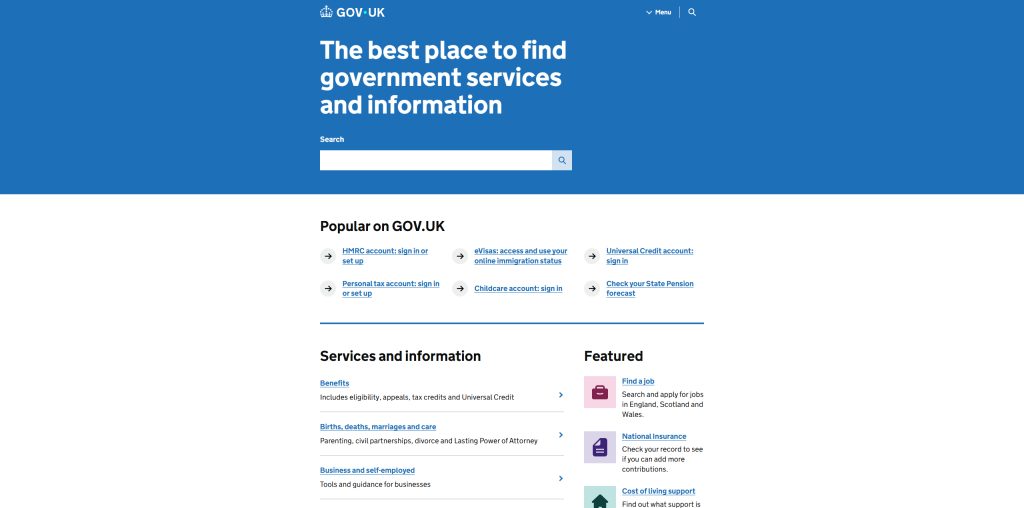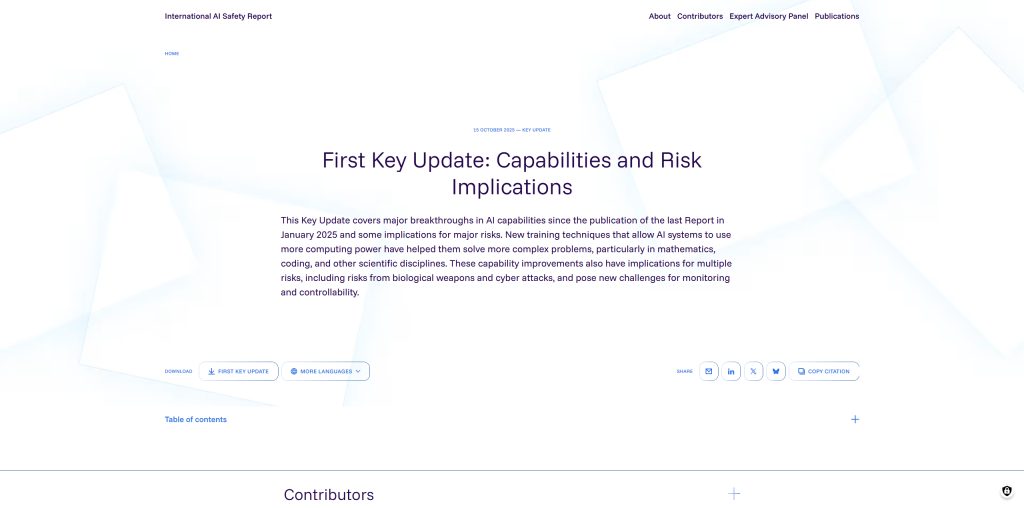You know that feeling when you’re stuck on a government website, thirty tabs deep, trying to work out which form you actually need? That’s the gap the UK is trying to close with AI—not by waving a wand, but by quietly wiring machine intelligence into the places where the state meets real life: clinics, call centres, fraud teams, the police desk, and yes, even the search bar on GOV.UK.
Let’s walk through what’s really happening—what’s working, what’s experimental, and where the guardrails are being hammered into place.
In February 2025, the Government Digital Service (now the digital centre of government inside DSIT) published a blunt, practical AI Playbook. Think of it as the house rules for civil servants: know the limits of AI, use it lawfully, keep humans in charge when decisions affect people, and be open about what you’re using and why. The playbook doesn’t just hand-wave; it spells out 10 principles and case studies from across government, including early work on a GOV.UK chatbot.

On top of that sits a transparency layer that’s getting teeth. The Algorithmic Transparency Recording Standard—the database where departments must publish what high-impact algorithms they use—was beefed up in May 2025. It’s now “mandatory for all government departments” and for public bodies that deliver frontline services when a tool significantly influences decisions or interacts with the public. Translation: if an algorithm might affect your benefits, visa, or a fine, the government needs to tell you it exists and how it’s used.
Parliament is pushing too. In March 2025, the Public Accounts Committee praised the potential but warned that “public trust is being jeopardised by slow progress on embedding transparency” and that so far there’s been “little evidence of successful adoption at scale.” That’s not a takedown; it’s a nudge to scale the winners and fix the plumbing (data quality, skills, legacy IT).
Where AI is live (or close)
On GOV.UK. GDS built GOV.UK Chat, an RAG-style assistant trained to answer questions by pulling from live GOV.UK pages. In controlled testing, 69% of users said the bot’s answers were useful, and the team hit ~80% accuracy—good, not perfect, and honest about hallucinations. They’re moving carefully: prove reliability first, then pilot more broadly. I like this pace. Fast is fragile in public services.
In the NHS. This is where AI is already saving hours and, bluntly, saving lives. England is rolling out AI that texts patients the right reminders to reduce missed appointments, after a pilot that cut no-shows by nearly a third. There’s wider deployment of tools that speed up reading brain scans for stroke and AI-driven 3D heart CT analysis across 50+ hospitals—cutting invasive tests and freeing clinicians to act sooner. Not hype; documented roll-outs and board minutes.
Fighting fraud. The Public Sector Fraud Authority runs SNAP, an AI-powered analytics platform that links sanctions, debarments, and company data to spot suspicious networks. When the government added 18,000 sanctions records and hundreds of thousands of dormant companies, the minister’s warning was simple: “Criminals should be aware that we’re putting technology on the front line.” New funding is backing more AI projects to prevent money being siphoned from public services.
Policing and facial recognition. Controversial, yes, but it’s happening. The Met’s Live Facial Recognition deployments (openly published) show hundreds of arrests from 2025 operations, with watchlist sizes, alert counts, and false alert rates recorded. This is policing by spreadsheet as much as camera—transparent by design, and therefore inspectable by the public. Whether you support it or not, the record is there.
Inside the bureaucracy. The government’s Incubator for AI (i.AI)—now merged into the new GDS—has been building tools for civil servants: drafting minutes, summarising consultations, spotting patterns in huge response sets. One example, Consult, aims to “automatically extract patterns and topics” from public consultation responses and hand ministers dashboards rather than piles of PDFs. This is the kind of unsexy AI that actually moves policy.
The UK’s other bet: lead on safe AI
Two global pieces make the UK more than a domestic tinkerer.
First, the AI Safety Institute—a public lab that stress-tests cutting-edge models for dangerous capabilities (cyber, bio, deceptive behaviour) and publishes methods, results, and standards. It’s been updating the world on evaluation tracks and tooling, building a public science of AI risk rather than outsourcing it to vendors. The UK also commissioned the International AI Safety Report, described as the world’s “first comprehensive synthesis of… risks and capabilities of advanced AI systems” under Yoshua Bengio’s chairship. That signals seriousness.

Second, the UK signed the Council of Europe’s AI treaty in September 2024—the first legally binding international agreement on AI and human rights. Treaties aren’t magic, but they set a floor: dignity, non-discrimination, the right to challenge decisions. It’s a message to the civil service and suppliers alike: align with human rights law as you deploy AI.
Let’s be straight. The UK is trying to harvest the gains without automating away human judgment where it counts. You can see that in two places:
- Policy and guidance. The AI Playbook hard-codes “meaningful human control” for decisions that affect people. It also tells teams to publish ATRS records for significant, people-impacting tools so the public can see what’s in use. This isn’t academic. It’s operational doctrine.
- Departmental practice. Where automation touches entitlements or sanctions, departments are explicit about keeping a human in the loop and disclosing the role of any model. And when policing deploys facial recognition, the Met’s publishing thresholds, alerts, and outcomes so the accuracy debate isn’t hypothetical. Is it perfect? No. But it’s measurable and challengeable, which matters more.
What this adds up to
If you zoom out, the UK’s approach is pragmatic. Build manuals and muscle memory (the playbook). Ship useful tools where the risk is low and the value is concrete (hospital imaging, missed-appointment nudges, fraud analytics, assistive chat). Publish what you’re using when it affects people (ATRS). And set some international norms so safety isn’t an afterthought (AISI, treaty).
I’ll be candid about the weak spot: scaling. Parliament’s watchdog is right—without better data, skills, and procurement, you get pilots that never graduate. But we’re seeing the signs of a system that can learn. GOV.UK Chat didn’t promise the moon; it measured accuracy and user value, then iterated. The NHS didn’t declare an AI revolution; it rolled out a reminder engine where it actually moved the needle. Fraud teams didn’t boil the ocean; they wired more data into a graph and caught more bad actors. That’s the rhythm we need.
If you’re inside government, the next step is boring and powerful: pick one service where AI can remove a real bottleneck, publish your ATRS record, keep a human in the loop, and report the measurable gain in plain English. If you’re a citizen, hold government to its own rules. Ask: what algorithm touched this decision, where’s the record, and who’s accountable?
That’s how you run a country with AI: not with headlines, but with habits.









